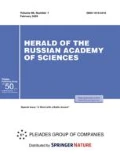Abstract
The ergot alkaloid 2-bromo-alpha-ergocryptine and its effect on lactation in rats were first described by E. Flückiger and H.R. Wagner in the journal Experientia (1968, no. 24). At first, this work did not attract much attention, but after isolating pure prolactin and establishing its physiological role, the high effectiveness of bromocriptine in the treatment of hyperprolactinemia soon became clear. Bromocriptine was actively studied not only by Western scientists but also in the Soviet Union beginning in 1975. The drug was used against persistent lactorrhea and amenorrhea, as well as acromegaly syndrome, and was also experimentally prescribed for Itsenko–Cushing’s disease. It was in Russia that unique data were collected on children of mothers with hyperprolactinemia who received bromocriptine therapy. Bromocriptine made an enormous contribution to the treatment of Parkinson’s disease, for which it has been used since the 1960s. In 2009, low-dose bromocriptine was approved for the treatment of type-2 diabetes. Currently, studies are continuing on the effect of this drug on various metabolic pathways (for example, gluconeogenesis, lipogenesis, etc.). Even 50 years after the discovery of bromocriptine, not all of its effects have been well studied, and researchers and doctors are facing new questions.
Similar content being viewed by others
Notes
Acromegaly is a disease characterized by increased secretion of growth hormone, disproportionate growth of skeleton bones, an increase in the protruding parts of bones and soft tissues, as well as internal organs, and metabolic disorders.
Dihydroxyphenylalanine (Dopa) is a biogenic substance that is formed in the body from tyrosine and is a precursor of dopamine. L-dopa (levodopa) is a medicinal, antiparkinsonian drug.
REFERENCES
E. Flückiger and H. R. Wagner, “2-Br-alpha-ergocryptine: Influence on fertility and lactation in the rat,” Experientia 24 (11), 1130–1131 (1968).
M. G. Pogrebinskii, Dr. Sci. (Med.) Dissertation (Tip. V. Demakova, St. Petersburg, 1870) [in Russian].
N. O. Asotskii, Dr. Sci. (Med.) Dissertation (St. Petersburg, 1870).
L. N. Anosova, “Galactorrhea,” Probl. Endokrinol., No. 4, 34–46 (1939).
M. G. Besser, R. F. Pfeiffer, and M. O. Thorner, “Anniversary review: 50 years since the discovery of bromocriptine,” Eur. J. Endocrinol. 179 (2), R69–R75 (2018).
D. L. Kleinberg and A. G. Frantz, “Human prolactin: Measurement in plasma by in vitro bioassay,” J. Clin. Invest. 50 (8), 1557–1568 (1971).
E. Del Pozo, R. B. Del Re, L. Varga, and H. Friesen, “The inhibition of prolactin secretion in man by CB-154 (2-Br-alpha-ergocryptine),” J. Clin. Endocrinol. Metab. 35 (5), 768–771 (1972).
G. M. Besser, L. Parke, C. R. Edwards, et al., “Galactorrhoea: Successful treatment with reduction of plasma prolactin levels by brome-ergocryptine,” Br. Med. J. 3 (5828), 669–672 (1972).
P. Hwang, H. Guyda, and H. Friesen, “Purification of human prolactin,” J. Biol. Chem. 247 (7), 1955–1958 (1972).
L. Varga, R. Wenner, and E. Del Pozo, “Treatment of galactorrhea-amenorrhea syndrome with Br-ergocryptine (CB-154): Restoration of ovulatory function and fertility,” Am. J. Obstet. Gynecol. 117 (1), 75–79 (1973).
G. Copinschi, M. L’Hermite, J. L. Pasteels, and C. Robyn, “Two-bromo-ergocryptine (CB-154) inhibition of prolactin secretion and galactorrhoea in a case of pituitary tumour,” Gynecol. Invest. 2 (1), 128–129 (1971).
G. A. Mel’nichenko, Extended Abstract of Cand. Sci. (Med.) Dissertation (Moscow, 1977).
M. O. Thorner, W. H. Martin, A. D. Rogol, et al., “Rapid regression of pituitary prolactinomas during bromocriptine treatment,” J. Clin. Endocrinol. Metab. 51 (3), 438–445 (1980).
G. A. Mel’nichenko, “The results of the clinical use of parlodel during the persistent galactorrhea-amenorrhea syndrome,” in Materials of the Symposium “Disorders in the Hypothalamus-Pituitary Axis: New Capabilities of Drug Therapy (Moscow, 1979), pp. 45–50 [in Russian].
E. A. Vasyukova, I. V. Pisarskaya, G. S. Zefirova, et al., “Parlodel in acromegaly treatment,” in Materials of the Symposium “Disorders in the Hypothalamus-Pituitary Axis: New Capabilities of Drug Therapy (Moscow, 1979), pp. 115–120 [in Russian].
E. I. Marova and S. A. Butrova, “The effect of parlodel on the function of the hypothalamo-pituitary-adrenal axis during the Cushing syndrome,” in Materials of the Symposium “Disorders in the Hypothalamus-Pituitary Axis: New Capabilities of Drug Therapy (Moscow, 1979), pp. 151–156 [in Russian].
I. I. Dedov and G. A. Mel’nichenko, Persistent Galactorrhea-Amenorrhea (Etiology, Pathogenesis, Clinical Picture, Treatment) (Meditsina, Moscow, 1985) [in Russian].
I. I. Dedov, G. A. Mel’nichenko, and T. I. Romantsova, Hyperprolactinemia Syndrome (Triada, Moscow, 2004) [in Russian].
G. A. Mel’nichenko, N. T. Starkova, and V. S. Pronin, “Results of the clinical use of parlodel treating galactorrhea-amenorrhea and acromegaly,” Sov. Med., No. 6, 88–91 (1978).
M. O. Thorner, E. Flückiger, and D. B. Calne, Bromocriptine: A Clinical and Pharmacological Review (Raven Press, New York, 1980).
Author information
Authors and Affiliations
Corresponding authors
Additional information
Translated by K. Lazarev
Rights and permissions
About this article
Cite this article
Dedov, I.I., Mel’nichenko, G.A. & Gorbacheva, A.M. Fifty Years to Bromocriptine. Her. Russ. Acad. Sci. 89, 623–627 (2019). https://doi.org/10.1134/S1019331619060030
Received:
Revised:
Accepted:
Published:
Issue Date:
DOI: https://doi.org/10.1134/S1019331619060030



